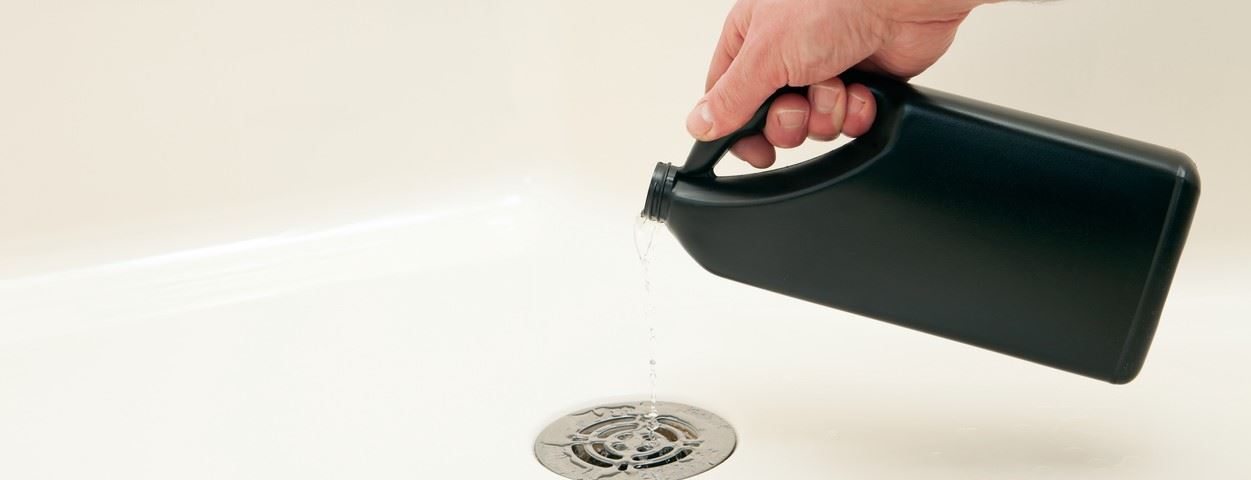If you could guarantee that only water went down your drain, you would never have to deal with clogs. Unfortunately, substances like soap scum, hair, and grease also flow into your kitchen and bathroom sinks. When these ingredients gather in your pipes, they can form blockages that slow or stop the water flow.
Every homeowner should be prepared to deal with a minor clog. However, taking the wrong approach can make matters worse and even damage your plumbing.
Here’s What NOT to Do When Unclogging a Drain
Use the Wrong Plunger
Plumbers use plungers to force smaller clogs down the pipes. Sometimes, a little push is all it takes to break up the clog. However, you want to choose the right plunger for the occasion.
When to Use a Flat Cup Plunger
For the best results, your plunger should form a seal around the drain. In sinks and bathtubs, a flat cup plunger is the correct tool. Place the plunger over the drain and push with moderate force. Pushing hard can loosen connections and cause leaks under your sink.
When to Use a Flange Plunger
A flange plunger is meant for use with toilet clogs. With the proper position, this may be the only tool you need to move a clog over the bend.
Jam the Auger Down the Drain
An auger takes clog removal to the next level. In this case, the tool makes physical contact with the clog. After you thread the device into the drain, you will feed it into the pipe until it touches the clog. By twisting further, you may break up the clog or pull the blockage out of the drain. Trying to push the clog out with a drain snake will put pressure on your pipe connections. If you cannot break up the blockage, it is time to seek a new method or professional help.
Use Chemical Drain Cleaners
Commercial drain cleaners have harsh chemicals that can harm your pipes as well as burn exposed skin. Also, whatever goes down your drain goes into your septic system or sewer line and the environment. For minor clogs, there are safer solutions.
When you were younger, you may have seen someone simulate a volcano with baking soda and vinegar. This bubbly reaction happens when an acid and base combine and release carbon dioxide. The same process can help dislodge a clog.
- Pour boiling water into your drain. The heat will soften the clog.
- Pour one cup of baking and one cup of vinegar down your drain. The bubbles can loosen and disrupt the blockage.
- If possible, plug the drain for five minutes. The carbon dioxide buildup will put pressure on the clog to push it down the line.
- Pour more boiling water down your drain. If the clog has not moved yet, this final step may flush it out.
Related: Why is Vinegar and Baking Soda Such an Effective Cleaner?
Ignore the P-Trap
If you look underneath your sink, you will notice that the pipe does not go straight down. Instead, a curved pipe known as the P-trap holds a small amount of water that prevents sewer gas from flowing out of your sinks. While this small bend helps keep your home healthy, it is also the most common place for sink clogs to form.
When all else fails, you may need to remove the P-trap and clean it out by hand. Thankfully, this pipe comes standard with connectors at either end. By loosening both connections, you can safely remove the trap. Keep in mind that there will be water in the pipes, so you will want a bucket handy to prevent a mess. From there, you should be able to clean out the clog by hand or with a brush.
Call the Ruston Area Drain Cleaning Experts
When all else fails, you’ll need the help of an expert to safely and effectively clean your drains. At Mark Johnson Plumbing, we have the tools and experience to keep your water flowing again. To schedule your appointment, call (318) 255-1332.


